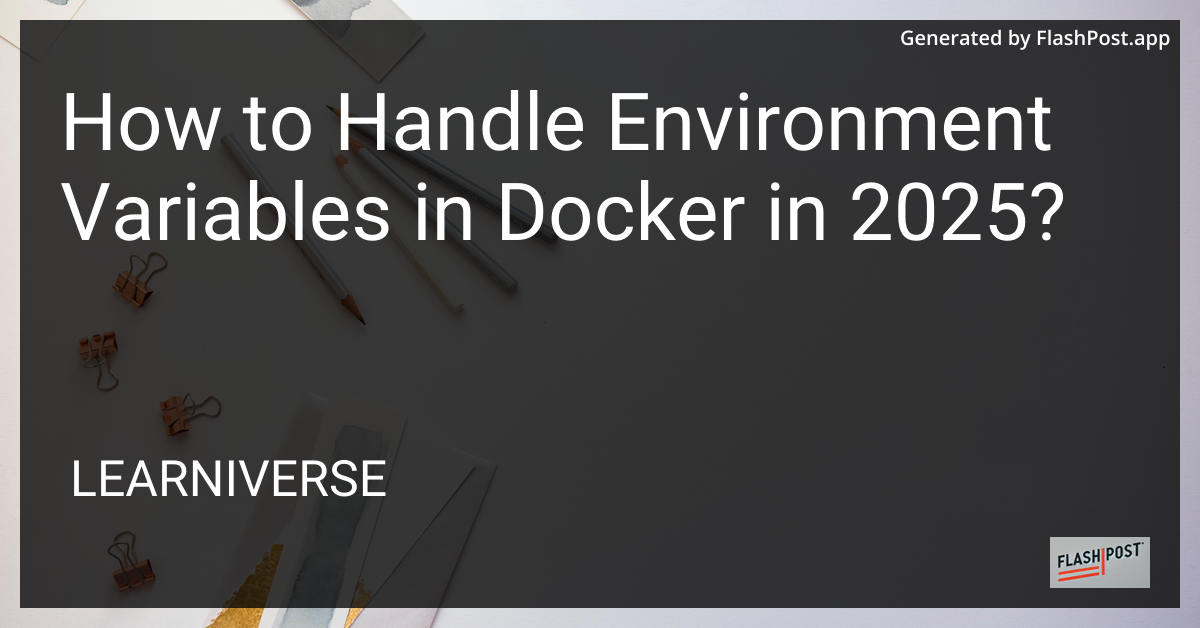How to Handle Environment Variables in Docker in 2025?

In the ever-evolving world of software development, handling environment variables in Docker has become a fundamental practice. By 2025, managing these variables efficiently is more crucial than ever to ensure seamless docker deployments, scalability, and security.
Understanding Environment Variables
Environment variables are dynamic values that can affect the way running processes behave on a computer. In a Docker context, they allow you to manage configurations external to your containerized applications. This capability is essential for creating portable applications that can easily move across multiple environments and platforms.
Best Practices for Managing Environment Variables
With the growing complexity of distributed systems, adhering to best practices for managing environment variables is vital:
1. Use .env Files
Storing environment variables in a .env file is a popular approach. This file is excluded from version control and allows for a straightforward way of passing variables into your Docker containers without hardcoding them into the Dockerfile.
DATABASE_URL=postgres://user:password@localhost:5432/mydatabase
API_KEY=your-api-key-here
2. Docker Secrets for Sensitive Data
For sensitive information such as API keys and passwords, using Docker Secrets is recommended. This feature provides a centralized, secure way to automatically encrypt and store confidential data, ensuring they are only accessible to services that need them.
echo "your-secret-value" | docker secret create my_secret -
3. Utilize Docker Compose
Docker Compose allows you to define and share multi-container applications. By referencing environment variables from a .env file or inline in your docker-compose.yml, you can streamline your configuration process across different environments.
version: '3.8'
services:
web:
image: my-web-app
environment:
- API_KEY=${API_KEY}
4. Validate and Monitor
Regularly validate and monitor the environment variables set in your containers. This practice helps prevent configuration drift and potential security vulnerabilities. Tools and platforms in 2025 offer enhanced capabilities for auditing and managing these configurations centrally.
Securing Your Environment Variables
Security is paramount when handling environment variables, especially in a Dockerized application. Start by auditing the variables you use and ensuring they adhere to security best practices. The implementation of tools like Fail2Ban inside Docker Containers can further bolster your system's defenses against unauthorized access.
Conclusion
With the best practices outlined in this guide, you can effectively manage and secure environment variables in your Docker applications as you transition from vagrant to Docker or within other complex microservices architectures. Staying updated with evolving techniques and tools will ensure your Dockerized applications remain efficient, scalable, and secure in 2025 and beyond.